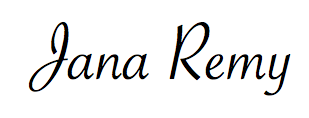
I don’t subscribe to many magazines. I mean, they are certainly fun to read (and who doesn’t love thumbing through National Geographic or Yoga Journal), but it’s hard to find time for them and I dislike the paper waste that they generate. But one magazine that has continued to hold my attention for the past few years is Seed (tagline: “Science is Culture”). I find myself gasping over the artwork and riveted by the articles. The writing is almost-always top-notch, too.
I just wanted to share a few paragraphs from a recent article, “The Future of Science” (Nov/Dec 2007) because I find them so thought-provoking. [ok, confession #1: 2007 seems recent to me–I read and re-read these mags and just can’t get enough of them. And confession #2: I think molecular models are hot, don’t you? And, yes, I am a complete and total dork]:
In the early 1920s, Niels Bohr was struggling to reimagine the structure of matter [note: I do this all the time, don’t you???]. Previous generations of physicists had thought the inner space of an atom looked like a miniature solar system with the atomic nuclues as the sun and the whirrig electrons as planets in orbit. This was the classical model.
But Bohr had spent time analyzing the radiation emitted by electrons, and he realized that science needed a new metaphor. The behavior of electrons seemed to defy every conventional explanation. As Bohr said, “When it comes to atoms, language can be used only as in poetry.” Ordinary words couldn’t capture the data [gee, do you think my dissertation adviser would accept this as an excuse??]
Bohr had long been fascinated by cubist paintings. As the intellectual historian Arthur Miller notes, he later filled his study with abstract still lifes and enjoyed explaining his interpretation of the art to visitors. For Bohr, the allure of cubism was that it shattered the certainty of the object. The art revealed the fissures in everything, turning the solidity of matter into a surreal blur.
Bohr’s discerning conviction was that the invisible world of the electron was essentially a cubist world. By 1923, de Broglie had already determined that electrons could exist as either particles or waves. What Bohr maintained was that the form they took depended on how you looked at them. Their very nature was a consequence of our observation. This meant that electrons weren’t like little planets at all. Instead, they were like one of Picasso’s deconstructed guitars, a blur of brushstrokes that only made sense once you stared at it. The art that looked so strange was actually telling the truth.
It’s hard to believe that a work of abstract art might have actually affected the history of science. Cubism seems to have nothing in common with modern physics. When we think about the scientific process, a specific vocabulary comes to mind: objectivity, experiement, facts. In the passive tense of the scientific paper, we imagine a perect reflection of the real world. Paintings can be profound, but they are always pretend…
But the trajectory of science has proven to be a little more complicated. The more we know about reality–about its quantum mechanics and neural origins–the more palpable its paradoxes become. As Vladimir Nabokov, the novelist and lepidopterist, once put it, “The greater one’s science, the deeper the sense of mystery.” [yes, indeed…]

